尺八演奏家 - 海山 (John Neptune) 照片来源网页Dr. Kristy博士(可参考前篇 女子尺八演奏家): http://www.flickr.com/photos/kirstykomuso/1333065516/
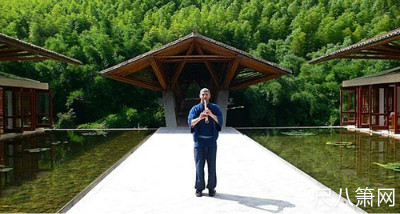
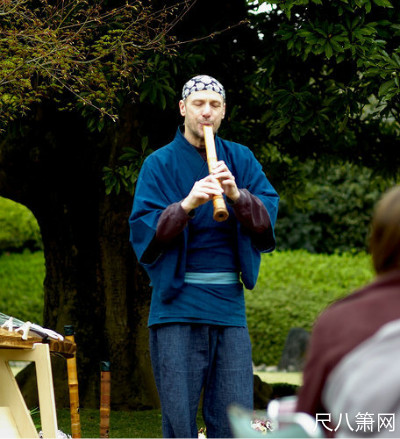
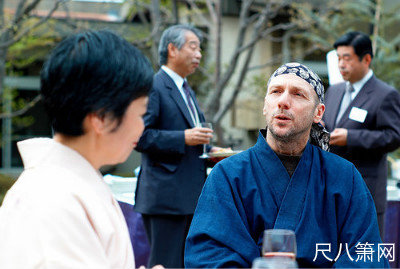
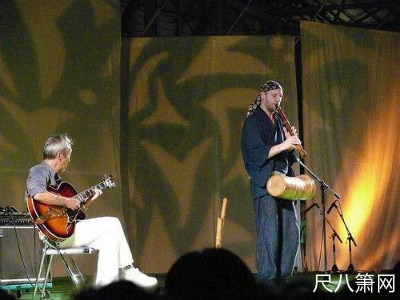
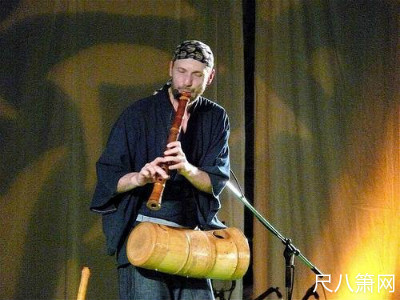
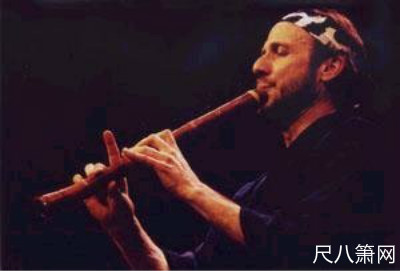
海山大概是目前尺八世界最具知名度的演奏家,这包括在日本及欧美,台.港.大陆..等. 所灌录的尺八音乐,大部份为其自创为主,最近的几片CD,除了受到喜欢尺八人士的喜爱,也受到广大音响迷的推崇,这倒是蛮特别的.2007年在圆山饭店为期三天的台北音响大展,可以看到一堆音响厂商使用的DEMO片,录音效果极佳,就是海山的Take Dake(DENON MSCD-8006), 中文被翻译成"竹. 竹". 在较大的音响店,或CD店,应该可以买得到.
海山喜欢用尺八演奏西洋爵士乐,味道几乎跳脱一般人对尺八的认知.也跳脱尺八音乐的范畴. 海山年轻时前往日本学习尺八,完成师范认证后,一度回到美国,现在则住在日本,以世界各地演奏,尺八製管,为其生活的重心,教学偶而为之.也定期在"目白"举行製管讲座,因经常灌录CD, 1991年也在日本埼玉县"高丽川-鸭川" Komagawa盖了一座挑高近9公尺的专业录音室(注1: 请参考蔡鸿文兄2011/07/07 20:55 回应更正部份)(距离东京约2-1/2小时的车程),在这裡录下了"WORLDS CAN'T GO THERE" 专辑.
目前,海山的尺八作品在尺八世界享有极高的评价,特别是长管部份,以极少的批土,达到极佳的效果.在日本曾试过海山的长管二尺三,在目白试吹过无批土的地无一尺八寸管,也试吹过老师的三尺ㄧ,性能优异,但后来海山又对现有日本传统尺八作改良,将音孔的大小由一般现代尺八的11mm, 改为较大的12mm, 而ㄧ般圆形钻孔也被修改成椭圆形钻孔(注2: 请参考蔡鸿文兄2011/07/07 20:55 回应更正部份)(,而一般所谓的古管,音孔大小为10mm.据其资料所言,如此可以较容易吹出Tsu-meri,而且较易得到大音量,记得曾看过资料,早期海山好像与增田州凤(州凤铭)合作製作尺八(曾试吹过州凤铭二尺三),这点还需要再确认(注3: 请参考蔡鸿文兄2011/07/07 20:55 回应更正部份)(,现在则与美国加州的Monty Levenson合作尺八的製作, Monty Levenson使用其专利的Precision Cast Bore技术,这应该是吸引海山的原因之一(注4: 请参考蔡鸿文兄2011/07/07 20:55 回应更正部份)(,有空再对Cast Bore作介绍.
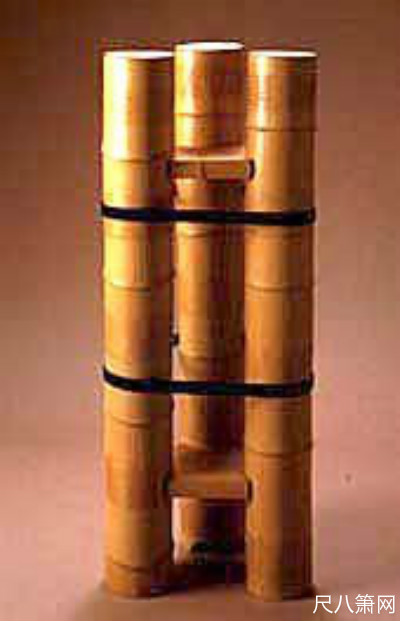
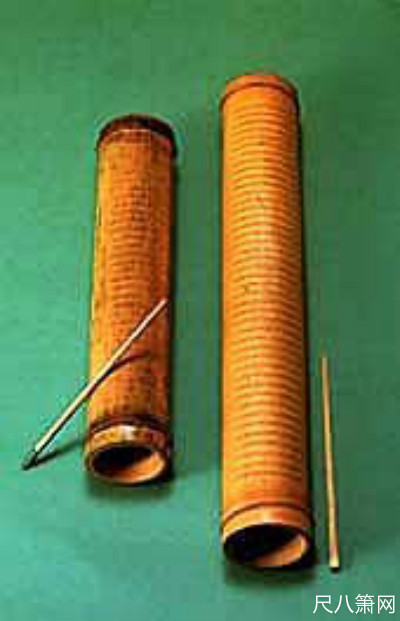
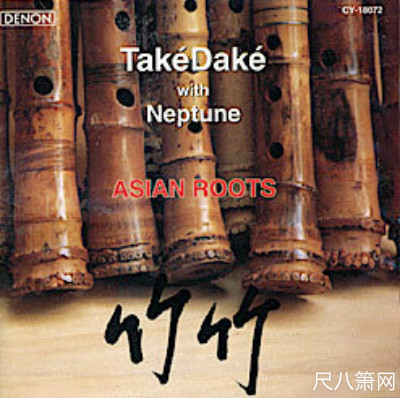
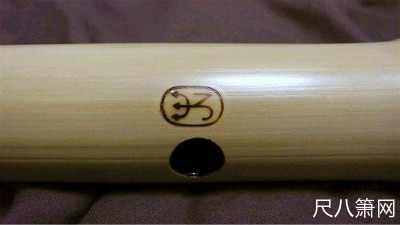
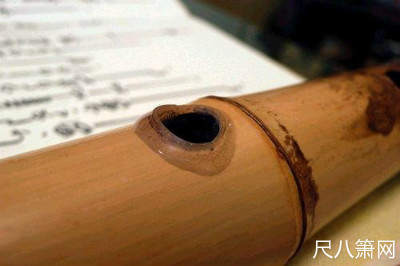
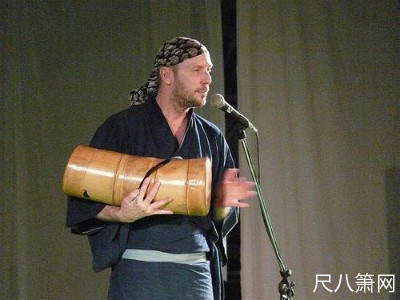
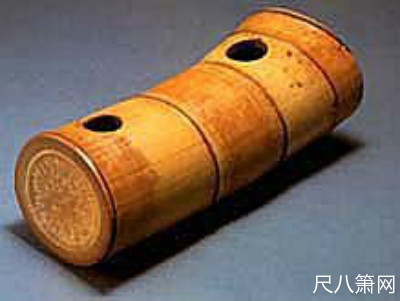
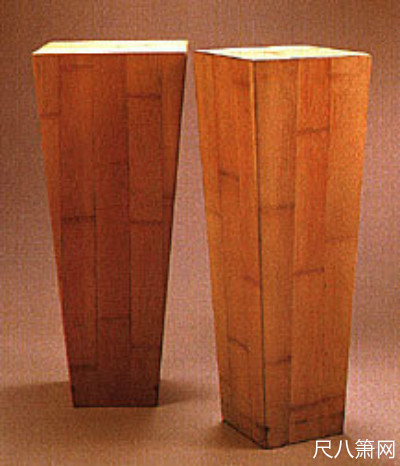
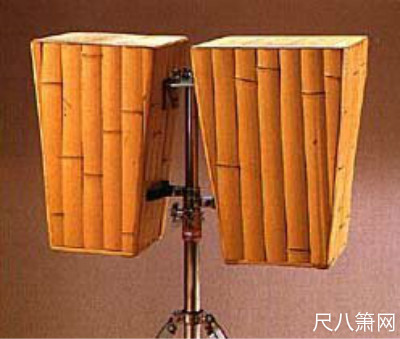
海山于1951年11月13日生于美国加州奥克兰市,2岁时搬到几个小时车程外的圣地牙哥,高中时吹小喇叭,后来在学校摇滚乐团任鼓手,大学选择夏威夷大学,吸引他的主要原因是"衝浪". 可能也因为夏威夷一直被称为是"衝浪者的天堂,一年四季几乎随时可以衝浪.也开始修音乐学分,当时最想学的是印度的india tabla,但当时无人教授而作罢.于是选择尺八,因为它高音音色如长笛,低音嘶哑的声音,就像萨克斯风.另外引我上钩的原因是当我发现,尺八不过是一支5孔的竹子作成的吹管乐器.1971年,20岁那一年,海山开始向夏威夷的一位日本僧人学习尺八.
1973年,海山前往京都展开了为期一年的尺八学习,然后返回夏威夷完成他的音乐学位,毕业后, 海山再度回到京都,并在1977年3月取得都山流师范认证.并被授与"海山"这个名字.
自此,海山展开其尺八音乐之路,将尺八与许多的西方乐器融合,也创作了许多尺八音乐.1980年对海山的音乐道路是非常重要的一年,他的第3张唱片(BAMBOO),获得了日本文部省(Cultural Affairs Agency of the Japanese Ministry of Education)的最佳年度唱片大奖,这是第一次由外国人获奖,而且还是爵士尺八.这张专辑甚至登上香港的畅销排行榜.
1980年之后,海山陆续与许多著名音乐家合作灌录了"Mixed Box" 及 "West of Somewhere"两张专辑,也是爵士尺八,,也获得很大迴响.
1992年与德国古典吉他演奏家Jeorge Lawall,现代絃乐四重奏乐团合作,在德国教堂完成录音的 "Kite"(风筝),在著名的Billboard, Swing Journal杂志上都获推荐.
音乐与音效音响效果也是海山追求的,海山继续将尺八带到古典以外,没人去过的领域,River Rhythm专辑 ,就是海山在印度?马德拉斯,与多位当地的音乐家合作完成.
除了爵士尺八以外,海山也用尺八表现如蓝调(Blues),新世纪音乐(New Age),并灌录了许多CD.当中也有古曲尺八音乐的CD灌录.
海山,以非古曲尺八扬名于全世界,也将尺八带领到更宽更广的音乐世界.
海山在美国尺八年度刊物曾发表过一篇"都山流尺八学习之路",内容介绍都山流认证过程,考试的方式,在日本尺八上课的方式,有空再翻译出来与大家分享.
Monty Levenson的网页 海山的 介绍:
http://www.pacificsites.com/~jneptune/P-Profile.html
You Tube的音乐片段
http://www.youtube.com/watch?v=5MC11F7PcZk&mode=related&search=
海山的网站 : http://www.pacificsites.com/~jneptune/
mp3试听 : Touch of Blue Bamboo Shadow Dance Light the Way Steps In Time Making Waves Blue Bamboo Safe And Sound Slow Boat
===========================================================================
John Kaizan Neptune is widely acknowledged to be among the top masters of the shakuhachi, or Japanese bamboo flute. Well-known in Japan, this California native is also an accomplished jazz artist and composer who has gained respect in both the East and West for his versatile and technically sophisticated melting pot of sounds.
--------------------------------------------------------------------------------
Neptune was born in Oakland, California, on November 13, 1951 and moved with his family to San Diego, California when he was two. He played trumpet in high school and later was a drummer in a rock band. For college he chose the University of Hawaii, basically for surfing, but also began to study ethnomusicology. "I was interested in learning the Indian tabla," recalls John, "but at that time in Hawaii there was no one to teach me. My number two choice was the shakuhachi. I was really fascinated because on the high notes it sounds like a flute and on the lower ones it sound husky, almost like a saxophone. And when I found out it was a five-holed flute made from a piece of bamboo-- I was hooked!" He began playing in Hawaii with a Japanese Buddhist priest in 1971.
Later in 1973 John move to Kyoto, Japan, to continue shakuhachi study for one year, but then returned to Honolulu to complete a degree in ethnomusicology. After graduation John traveled again to Kyoto and in March 1977 after several years of intense study he received the "shi-han", or master's certificate in the Tozan School of Shakuhachi. At that time he was awarded the honorary name "Kaizan" which means Sea Mountain.
Since then, John Kaizan Neptune has made a mark in contemporary music as an artist of exploration and expansion. His adaptation of the shakuhachi to various worldwide musical settings has been his forte since the beginning of his career. Looking back, his first major highlight was his third record release, Bamboo. It was awarded Outstanding Album of the Year for 1980 by the Cultural Affairs Agency of the Japanese Ministry of Education-- the first time ever a jazz album or foreign artist has been so honored!!
All throughout the 1980's Neptune toured and released albums that utilized the shakuhachi with various instrumentation. His most notable recording during the early years were Mixed Bag and West Of Somewhere, both of which leaned again toward a jazz-based rhythm section. These albums featured such outstanding American musicians as Don Grusin, Robben Ford, Nathan East, Abraham Laboriel, Alex Acuna, Kenny Kirland, Buster Williams, Cornell Dupree, and others.
After an early flirtation with jazz fusion John started to record acoustic albums using ideas from different musical cultures but with Western and Japanese influences as a constant factor. The bamboo master's 1992 project, entitled Kite, featured German musicians George Lawall on classical guitar and the Modern string Quartet. The CD was recorded in a church in Oberiennignen, Germany, and was highly acclaimed in both Billboard and Swing Journal magazines.
Neptune continues to step out beyond traditional Japanese music and takes the shakuhachi to places yet unexplored, and to settings unimaginable. River Rhythm, found him journeying to Madras, India, where he teamed up with Indian instruments and players to create some truly exotic sound colors. "I have know for years the shakuhachi timbre would work well in an Indian setting. It was only a matter of time before an album like this would finally take place," comments John. "You might say the whole project has a heavy air of Madras magic to it."
And magic indeed! the album's title cut draws heavily on a long flowing melodic line, a traditional characteristic of shakuhachi, and is backed up by the smooth backbeat of Malaysian drummer-cohort Lewis Pragasam. Each track has its own individual twist to offer featuring such instruments as a twangy jew's harp, a Nivanic string harp, tuned water cups, and more. Neptune's River Rhythm takes listeners on a musical journey to India laced with World music rhythms, blues, New Age, and jazz.
After exploring new ground for the past 15 years, John went back to his "traditional Japanese roots" with Prime Numbers. Although the project features traditional Japanese instruments, the melodies and harmonies have a strikingly non-traditional flavor to them. "It was my intent," reports John, "to feature traditional instruments in ways that are not typically traditional." The instruments used for the recording, the 5-holed shakuhachi, the 3-stringed shamisen, the 13-stringed koto, and the 17-stringed bass koto, just to happen to all contain prime numbers!
To date, John has performed live and has toured North America, Europe, Australia, and Asia. When he is not recording or performing he his spending time making shakuhachi and other bamboo instruments in his home-workshop in the Japanese countryside.
==================================================================
以下是香港知名作家素黑小姐在2007年八8月份举办尺八音乐会的介绍.
静心音乐分享会 (作者: 素黑)
http://imwildman.blogcn.com/diary,9503798.shtml
http://www.blacksoblack.com/big5/?mod=news&task=show_item&cat_id=0001&item_id=00000048
这是我特别自资搞的非牟利静心音乐会,目的只有一个:和你们分享高能量的爱。
你也许能从我的书中感受爱和平静,但我想告诉你,我亲身经历过最大的平静,都不靠文字,而是音乐,尤其是由能量正面,高质素的演奏家奏出的静心音乐。
尺八是我的至爱,John Neptune是世上我最欣赏的音乐大师之一,也是我的朋友。
很多读者都知道我很喜欢尺八这种原是日本禅修的古老乐器。最简单的竹子,能奏出最丰富的音域,震撼心灵。年前我曾在尖沙咀的小酒吧亲身欣赏到当代最出色的尺八大师John Neptune的演出,非常触动。一般音乐家是演奏音乐,John却是谦虚地分享,让音乐融进听者的生命裡,感染力惊人。他的吹奏曾在日本令多年不说话没表情的老人奇蹟地突然开窍,手舞足蹈兼开口,场面令人感动。
八月三、四日,我特意邀请了John来香港,联同日本筝大师福原左和子,于香港艺穗会演奏静心尺八 + 筝音乐,尺八的禅意配合日本筝的温柔与激情,是盛夏淨化心灵的音乐spa。
John的音乐如其人,充满爱的感染力。我在《两个人两个世界》裡「黑尺八之恋」一文已描写过。
John是美国人,年青时嚮往东方音乐而远赴日本学艺,获得日本尺八都山流师范资格,并受「海山」之名,说明了他的音乐风格澎湃如海,浑厚如山。John不仅承继传统,更革新了尺八的技巧,大大拓阔和丰富了尺八的音色及表现手法。 除了是公认世上技巧最出色的尺八大师外,他更是著名的world-music/爵士管乐手。他立根传统,融合多种乐风(爵士乐、印尼、印度及日本等音乐)的world-music fusion风格别树一帜,在日本备受尊重,深受世界各地听众喜爱。
John也是多产的出色作曲家,至今已灌录了超过二十张不同音乐风格和世界各地不同乐手合作的唱片,当中大部份是他的原创。他的大碟Bamboo甚至曾荣登香港的唱片畅销榜。
John同时是尺八製作大师。他改良了尺八的音质和音律,适合演奏多种乐曲,以及和各种乐器合奏,使尺八变成真正意义的现代乐器。他製作的尺八为世界各地收藏家所锺爱。2005年冬天,我曾远赴John居住的日本千叶县他的家,跟他学习自製黑尺八,后来在博客贴了造黑尺八的故事:「造尺八修行」。
除了尺八外,John更发明了多种竹製的乐器。例如他的大碟《竹竹》(Take Take)中所有乐器都是由他用竹製成的。即是说这是纯竹之声,可是乐音之丰富令人难以置信。据说这CD已经成为Hi-Fi界的试机天碟。竹鼓uduboo是他的最新发明,像是印度的tabla和非洲的udu合二为一,非常有趣。
福原左和子也是不可多得的演奏家。她的琴音优雅细腻得令人屏息,可是裡面却蕴藏了澎湃的力量。看她的演出,不仅是在听一位弦乐大师演奏,你还要欣赏她的手指,就像是十位舞蹈家在琴弦上优雅飞舞!
这一次在香港的演奏会将包括其中以下三首特别的乐曲:
1 大和之曙 Yamato Dawn :任何人的心都会被这首柔和的乐曲溶化。这是开场曲,所以,千万别迟到啊!
2 鹤の巢笼:描写在日本文化裡象徵纯洁和坚贞的鹤筑巢时的优美神态。原本是襌宗古典曲,可是海山以令人惊叹的技巧和表现手法重新演译,把它变得wild起来。
3 鸟のようた:筝独奏,描写飞鸟在天空自由翱翔的境界。福原的琴音优雅细腻,轻巧紧緻,令每个听的人都感到自己如在无边的晴空裡自由飞翔。从未想过筝可以营造如此广阔无垠的空间感。
转自台湾山城老师博客:blog.xuite.net/shakuhachi.taiwan
评论列表: